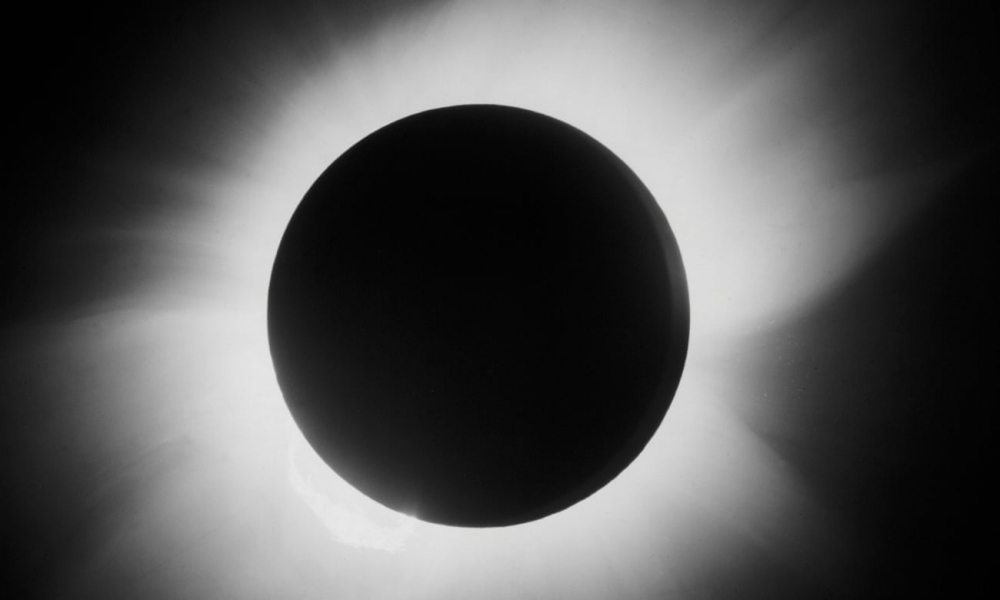100 years on: the pictures that changed our view of the universe

Total solar eclipse, 29 May 1919. Glass positive photograph of the corona, taken at Sobral in Brazil, with a telescope of 4in in aperture and 19ft focal length. Photograph: Science & Society Picture Library/SSPL via Getty Images
Robin McKie
Sun 12 May 2019
Arthur Eddington’s photographs of the 1919 solar eclipse proved Einstein right and ushered in a century where gravity was king
A hundred years ago this month, the British astronomer Arthur Eddington arrived at the remote west African island of Príncipe. He was there to witness and record one of the most spectacular events to occur in our heavens: a total solar eclipse that would pass over the little equatorial island on 29 May 1919.
Observing such events is a straightforward business today, but a century ago the world was still recovering from the first world war. Scientific resources were meagre, photographic technology was relatively primitive, and the hot steamy weather would have made it difficult to focus instruments. For good measure, there was always a threat that clouds would blot out the eclipse.
See full text